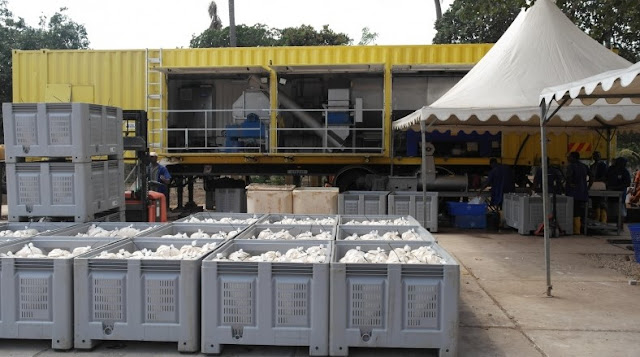Small-Scale Biorefineries - Boosting sustainable use of biomass at local level
Biorefineries are the core of the bioeconomy. They
represent the hope of the rural zones, the promise of a sustainable, competitive
and knowledge-intensive economy. In a simple way, it is all about producing a
wide range of bioproducts (platform chemicals, biofuels, biopolymers, food,
nutraceuticals…) from biomass. In this sense, there is much talk about the
large biorefinery units and their capacity to promote a significant economic growth
and create millions of jobs in rural areas. Also, they can attract innovative
high-tech companies specialise in obtaining a range of high-value products from
biomass fractions and side-streams coming from the main biorefinery process.
However, small-scale biorefineries have not been given
very much attention to date despite the fact that they have the potential to
provide economic return at the farm level and to boost local and regional use
of the biomass. A smart and integrated process design can beat the advantages
of economy of scale applied in large-scale processes and the local re-use of
materials allows to minimize costs for recycling and transport.
Last week, as I travelled through the large fields of Castilla
y León (very green at this time, by the way), I could envisage biorefineries
here and there creating value from biomass and becoming reality the bioeconomy
model. I dream of a net of small-scale biorefineries: producing a plethora of
bioproducts; revitalizing the farms, the forests and the local rural areas; being
a source of innovation and knowledge; based on principles of sustainability and
solidarity.
The characteristics of the biorefineries belonging to
such net should be the following:
- High flexibility and versatility. Multi-feedstock
and multi-product. Capable of adapting to changing necessities.
- High level of integration. With the ability to take
advantage of every lateral stream and by-product.
- Rooted in the local communities and the environment.
- Interconnected to each other.
As a first step to fulfill the dream, I would like to
offer a platform to promote small-sized biorefinery concepts and highlight
their importance for the bioeconomy. Thus, I am launching two complementary initiatives.
1.
A new blog section – Small-Scale Biorefineries
The section will cover:
- General definition of the concept.
- List of projects and references.
- Information about events, project calls, organisms
and publications.
Currently, very few contents are available but the
section will be under constant construction and evolution. It is intended to be
an open repository and you can collaborate to build it. If you have some
interesting contribution, do not hesitate to contact me via info@biorefinno.com.
2.
LinkedIn group – Small-Scale Biorefineries
It will be a digital platform where all players can:
- Share news, experiences, projects…
- Build a net of open innovation on small-scale
biorefining.
- Look for partners and investment opportunities.
Figure 1. The AMPU
(Autonomous Mobile Processing Unit) processes fresh cassava roots (extracted
from the web page of DADTCO). Example of small-scale biorefining.




